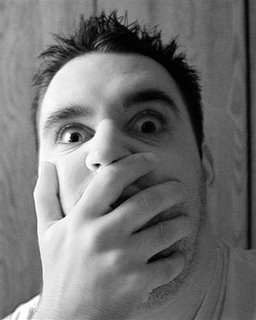I was recently out on a "gig," as we photographers say. A "gig" is what we call a "random destination that we drive to so we can stand around with a camera dangling round our necks". Sometimes we actually look through the hole (called the "squinty portal" in cameraspeak) and push the button.
On this gig, I took a picture of a beetle.
 A mighty fine shot, if I do say so myself. And of course I do. I used my Canon RangeGoblin DSLR with a Dweezlebaum filter over the front element. You get a little bit of frobbing around the edges with a Dweezlebaum, but the increase in overall sphinctering is worth it.
A mighty fine shot, if I do say so myself. And of course I do. I used my Canon RangeGoblin DSLR with a Dweezlebaum filter over the front element. You get a little bit of frobbing around the edges with a Dweezlebaum, but the increase in overall sphinctering is worth it.If you look very closely, you can see the tracks in the sand the beetle left behind. I'm not sure what kind of beetle it is, because I am a photographer and not a beetlologist.
The constraints of viewing a high-res picture in a browser becomes readily apparent in this case, as some may find it hard to pick out the beetle, who I have named Hank.

You'll have to click the image to make it bigger, as the downsampling tends to add smudge and wank to the titter mask.
If you (I do, because I'm a pro) have purchased the Pixelpuss™ plug-in for Adobe Photoshop, you can achieve some stunning results. Just thought I'd throw that out there.
Note the beetle's thorax and its many dots. Go on. Note them.
The original shot was framed on a quadpod with a Gravity Boom™ tracking system. This setup increases the areal density of pretty much any CMOS sensor, enabling the skilled artisan to utilize a technique called "pixel snubbing". It was worth the second mortgage.
As the image below clearly attests, the results are nothing short of pretty neat. Here is a zoomed-in crop of the original.

If Blogger's lousy Koala Image Engine hadn't stripped my images of their metadata, you could right-click them, select properties and view all the statistics. That is okay, though, as we enthusiasts love spouting meaningless (to you, the philistine) numbers attached to little bits of alphabet soup. Here are some now.
Fractal lenghth: 204 decibels.
Composure setting: Gritty (terminology may vary between camera models).
White balance setting was trimmed toward honky but the auto-crippling feature of the RangeGoblin tended towards the infra-red. Hopefully this will be addressed in future firmware releases.
RGB luminance quantifier: Knurled, but red-weighted with a high RPM trochoid setting.
Light metering: Squirrely.
The images were processed with Adobe Photoshop, which helped remove some of the lens flapping. I also employed the Imagemonkey® FrameSpackler Pro™ to fill in some of the dry spots.
Feel free to use my techniques for yourself, waste a bunch of money on high-end equipment to drop in the sand, and soon you will become an unbearable doofus in your own right!



I chortled heartily over the pseudojargon. My favorite, if I had to pick one: the PixelPuss plug-in.
ReplyDeleteI'm going with the Gravity Boom™ tracking system. It sounds like something that would be printed in large, comic book letters on front of a 1950s cereal box.
ReplyDelete